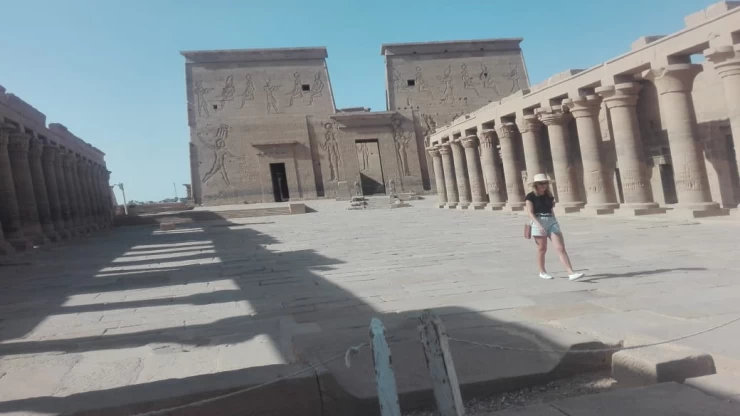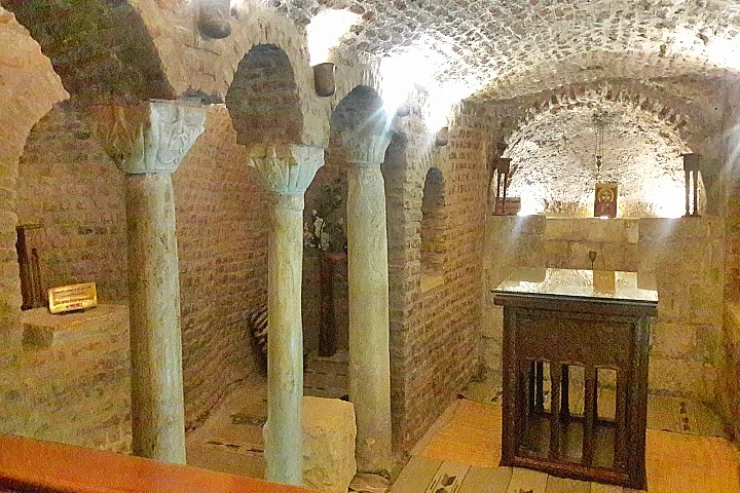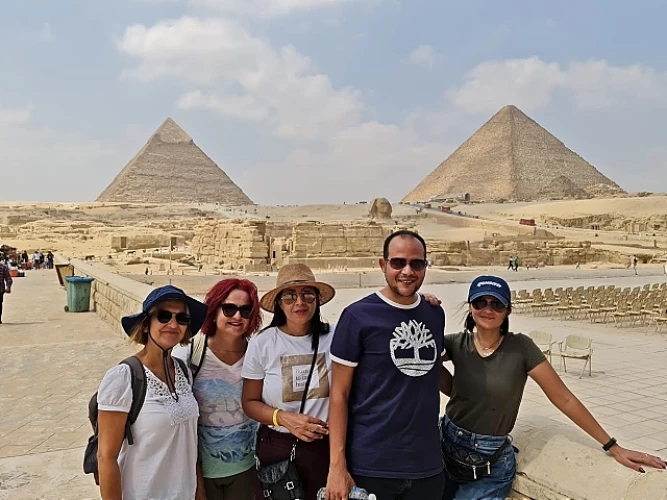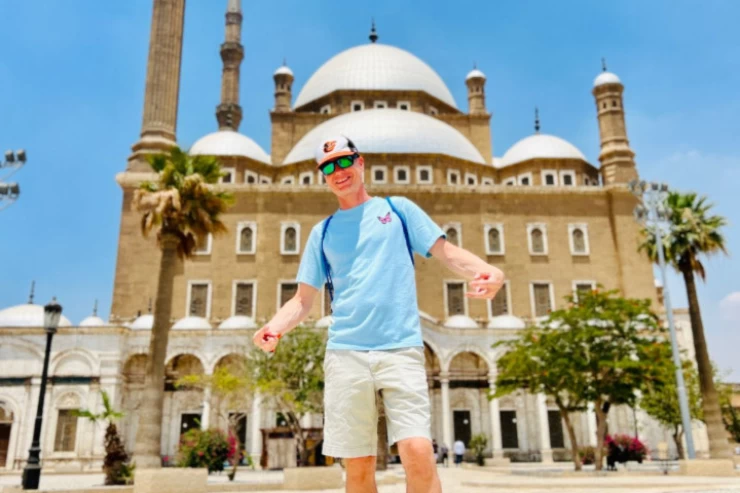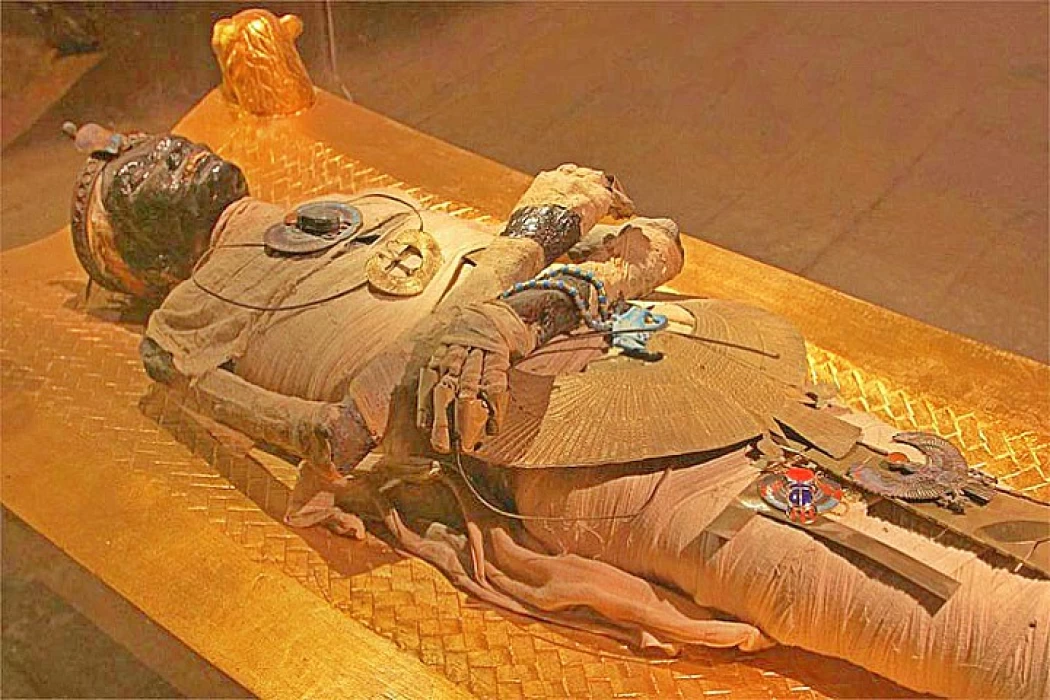
A Journey Through Ancient Egypt's Kings at the National Museum of Egyptian Civilization
As soon as you set foot inside the hall, you feel like you are on a tour of the Valley of the Kings in Luxor, which contains the most important tombs of the kings of ancient Egypt, thanks to its design in the form of dark, tomb-like rooms intersected by corridors that take visitors on a journey through history with the most important kings of Egypt. While the dim lighting on the mummies gives the feeling that they are suspended in the air.
These are the first scenes that appear upon entering the Hall of Royal Mummies at the Museum of Civilization, where the show begins with glass cabinets containing the mummy of King Sakhnen Ra, the first Hyksos warrior, and next to him are large screens displaying the studies conducted on him that showed the real cause of his death during the battle to liberate Egypt from the Hyksos.
Next to the mummy of King Sakhnen-Ra is a board of honor on which his achievements are written, as well as the date of his years in power.
As you continue to walk inside the hall, you find all the royal mummies, 18 kings and 4 queens from the Old Kingdom era, in chronological order.
The mummies are displayed in modern (German-made) glass display cases that do not allow for reflections. The temperature inside them does not exceed 21 degrees Celsius, and the percentage of nitrogen inside these boxes reaches 90% to avoid any contamination of the mummy.
Kings without coffins
Next to some of the mummies are their coffins, of which there are 12.
Sayed Abou El Fadl, general supervisor of the Royal Mummies Exhibition Hall, said that the process of collecting the coffins began three years ago. “Many of the kings were found in the two famous caches without their own coffins,” he said.
The show progresses through the mummy rooms, moving between the families of the New Kingdom. During the tour, some of the mummies from the Raamessa era are displayed in a large room, unlike the other mummies that are displayed individually.
Dr. Mahmoud Mabrouk, the Ministry of Antiquities' Museum Display Officer and designer of the displays at the Museum of Civilization, explained that they were keen “to group mummies belonging to the same time period, including the Raamessa and the Tahamsa.”
Philosophy of display
Mabrouk said that the philosophy of displaying the mummy hall is related to two important points. The first is related to the architectural composition of the mummy tombs in the Valley of the Kings in Luxor, as evidenced by the presence of some kings in individual chambers next to their relics, which gives a sense of the original shape of the tomb.
The second point, according to Mabrouk, “relates to the modernity of the display methods, which rely on dim lighting that highlights only the mummy. The displays “help visitors learn additional information about the history of the mummies,” he said.
He noted that the copper honor plaque near the mummies is not only meant to highlight their years of age, but also to “shed light on their most important achievements and their descendants.”
For the first time, funerary furniture found in the tombs of the kings, including coffins, boats, statues, dried foods, accessories and decorative items, are on display in the Mummies Hall.
Mabrouk continued “It took a long time to organize the display in order to collect the artifacts of each king, as each room is like a personal card for the mummies.
Mummification Hall
Mabrouk said the museum management is working on developing the display methods, noting that “preparations are being made to open a special hall for mummification methods in ancient Egypt and their development throughout the ages.”
He added that the new hall “will be attached to the halls of the mummies,” noting that this hall “is his next dream and will carry the secrets of the mummification methods used by the ancient Egyptians to preserve their kings.”
The mummies on display date back to the 17th, 18th, 19th and 20th Dynasties. They include 18 mummies of kings and 4 mummies of queens, the most prominent of which is the mummy of King Ramses II, in addition to Kings Sakhnen Ra, Thutmose III, Seti I, Merneptah, Ramses III, Queen Hatshepsut, and Queen Ahmose Nefertari.







